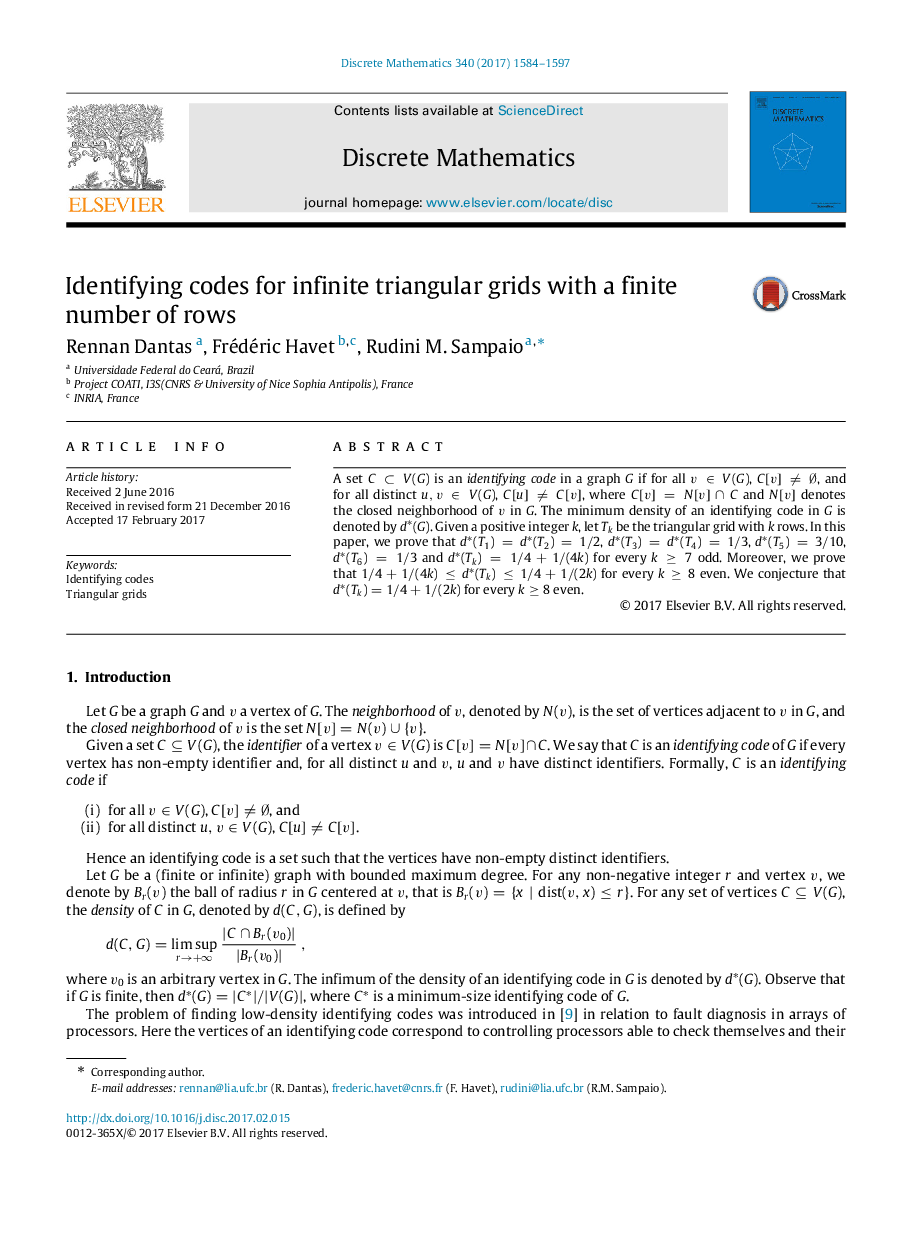| Article ID | Journal | Published Year | Pages | File Type |
|---|---|---|---|---|
| 5776913 | Discrete Mathematics | 2017 | 14 Pages |
Abstract
A set CâV(G) is an identifying code in a graph G if for all vâV(G), C[v]â â
, and for all distinct u,vâV(G), C[u]â C[v], where C[v]=N[v]â©C and N[v] denotes the closed neighborhood of v in G. The minimum density of an identifying code in G is denoted by dâ(G). Given a positive integer k, let Tk be the triangular grid with k rows. In this paper, we prove that dâ(T1)=dâ(T2)=1â2, dâ(T3)=dâ(T4)=1â3, dâ(T5)=3â10, dâ(T6)=1â3 and dâ(Tk)=1â4+1â(4k) for every kâ¥7 odd. Moreover, we prove that 1â4+1â(4k)â¤dâ(Tk)â¤1â4+1â(2k) for every kâ¥8 even. We conjecture that dâ(Tk)=1â4+1â(2k) for every kâ¥8 even.
Keywords
Related Topics
Physical Sciences and Engineering
Mathematics
Discrete Mathematics and Combinatorics
Authors
Rennan Dantas, Frédéric Havet, Rudini M. Sampaio,
